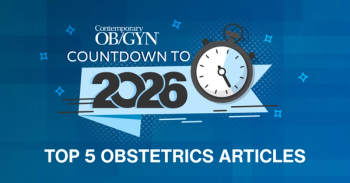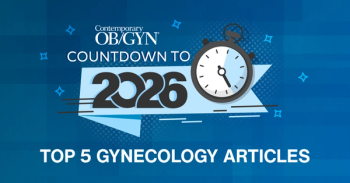
- Vol 66 No 5
- Volume 66
- Issue 05
What can you do to reduce maternal severe morbidity and mortality?
This informative physician fact sheet compiles steps ob/gyns can take to reduce maternal mortality and morbidity.
There are a number of things ob/gyns can do to take an active role in reducing maternal severe morbidity and mortality at their own institutions and practices, including:
Review all maternal deaths at your institution.1
Review all cases of severe maternal morbidity (ICU admissions and/or transfusions of 4 or more units of red blood cells.2
Implement bundles: hemorrhage, hypertension, etc.3
Have all perinatal staff take implicit bias training.6
Utilize toolkits.4
Have a massive transfusion protocol and hemorrhage kit on L+D.5
Have clear severe hypertension treatment guidelines posted and treat acute severe hypertension within 30 minutes.12
Screen for VTE risk and treat appropriately.7
Debrief after each adverse event.8
Participate in Levels of Maternal Care designation.9
Participate in multidisciplinary simulations in the L+D unit and in testing areas.10
Expand community outreach for better access for Medicaid and others.11
__
References
1. Berg C, Danel I, Atrash H, Zane S, Bartlett L.Strategies to reduce pregnancy-related deaths:from identification and review to action. Centers for Disease Control and Prevention. 2001. https://stacks.cdc.gov/view/cdc/6537
2. ACOG, SMFM; Kilpatrick SJ, Ecker JL. Severe maternal morbidity: screening and review. Am J Obstet Gynecol. 2016;215:B17-22.
3. a. Burgansky A, Montalto D, Siddiqui NA.The safe motherhood initiative: the development and implementation of standardized obstetric care bundles in New York. Semin Perinatol. 2016;40(2):124-131. b. http://safehealthcareforeverywoman.org/
4. a. Main EK, Cape V, Abreo A, et al. Reduction of severe maternal morbidity from hemorrhage using a state perinatal quality collaborative. Am J Obstet Gynecol. 2017;216(3):298.e1-298.e11. b. CMQCC.org
5. a. ACOG. Postpartum hemorrhage. Practice Bulletin. 2017;183. https://www.acog.org/clinical/clinical-guidance/practice-bulletin/articles/2017/10/postpartum-hemorrhage b. http://safehealthcareforeverywoman.org/ c. Blood product replacement: obstetric hemorrhage. CMQCC.org.
6. Rogers, VL, Nesbitt, SD. Overcoming racism and unconscious bias in ob/gyn. Contemporary OB/GYN.2020;64(8)15-17.
7. D’Alton ME, Friedman AM, Smiley RM, et al. National partnership for maternal safety: consensus bundle on venous thromboembolism. Obstet Gynecol. 2016;128(4):688-698.
8. a. Kilpatrick SJ, Berg C, Bernstein P, et al. Standardized severe maternal morbidity review: rationale and process. Obstet Gynecol. 2014;124(2 pt 1):361-366. b. Gardner R. Introduction to debriefing. Semin Perinatol. 2013;37(3):166-174.
9. a. Kilpatrick SJ, Menard K, Zahn CM, et al. Maternal Levels of Care. ACOG/SMFM Obstetric Care Consensus. Am J Obstet Gynecol. 2019;134:e41-55. b. Building US capacity to review and prevent maternal deaths. CDC Foundation. https://www.cdcfoundation.org/building-us-capacity-review-and-prevent-maternal-deaths
10. a. Emergencies in clinical obstetric (ECO). ACOG. https://www.acog.org/education-and-events/simulations/eco b. Deering S, Rowland J. Obstetric emergency simulation. Semin Perinatol. 2013;37(3):179-188.
11. Petersen EE, Davis NL, Goodman D, et al. Vital signs: pregnancy-related deaths, United States 2011-2015, and strategies for prevention,13 states, 2013-2017. MMWR Morb Mortal Wkly Rep. 2019;68(18):423-429.
12. Gestational Hypertension and Preeclampsia: ACOG Practice Bulletin, Number 222. Obstet Gynecol. 2020 Jun;135(6):e237-e260. doi: 10.1097/AOG.0000000000003891
Articles in this issue
over 4 years ago
Methotrexate in an Intrauterine Pregnancy – An Interesting Twistover 4 years ago
NASPAG 2021: Hillard’s Highlightsover 4 years ago
Diagnosis and Management of Primary Dysmenorrheaover 4 years ago
Enhanced Recovery After Cesarean Sectionover 4 years ago
Diagnosis and Management of Gestational Diabetesover 4 years ago
Keeping Politicians Out of the Exam Roomover 4 years ago
Behind the Scenesover 4 years ago
Vol 66 No 05: The May Issueover 4 years ago
Prevalence thresholds of screening testsNewsletter
Get the latest clinical updates, case studies, and expert commentary in obstetric and gynecologic care. Sign up now to stay informed.











